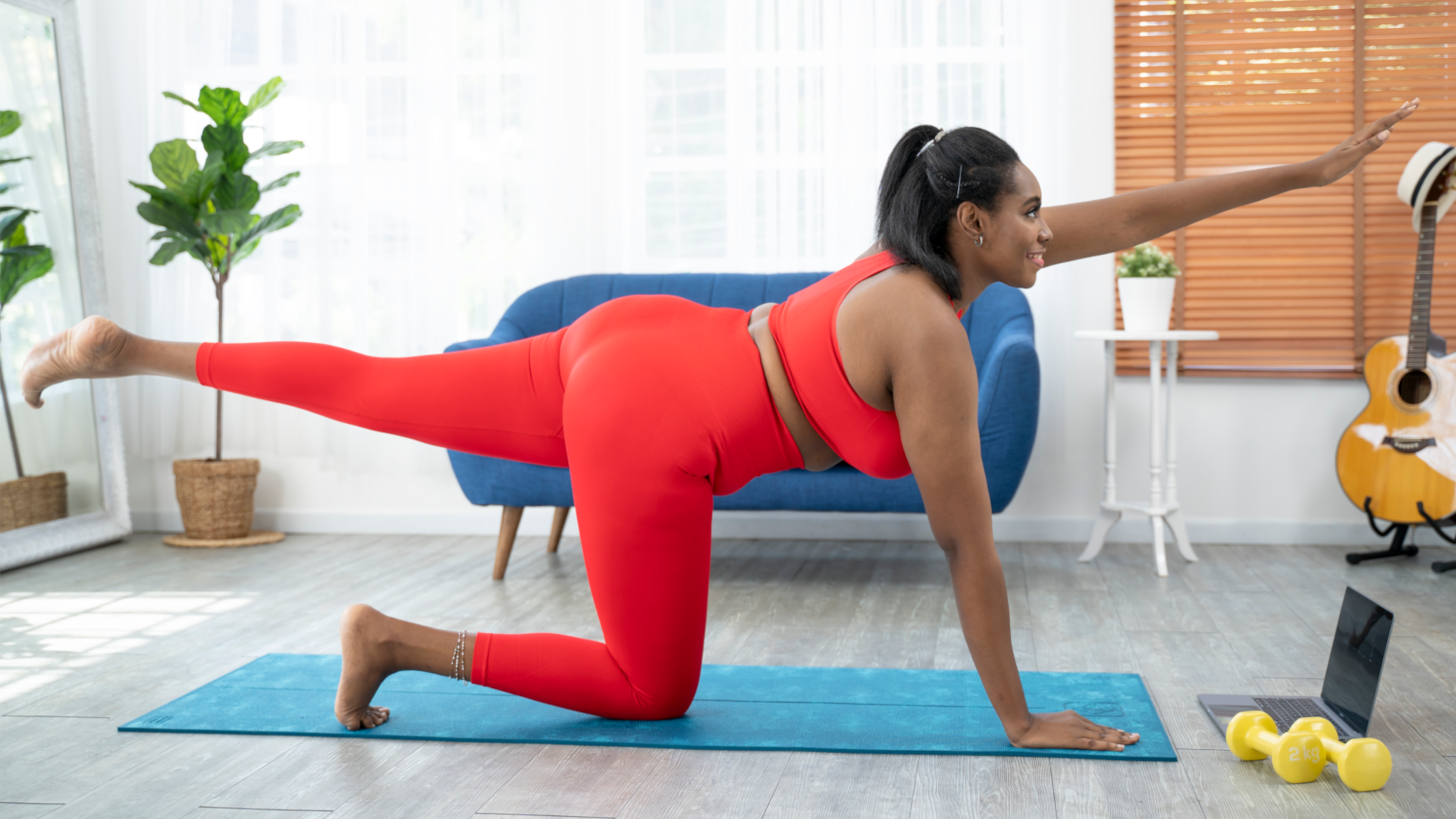

Coming from a dance background, Pilates has always been my preferred movement style away from cardio exercise due to its focus on control, using the breath and overall health and wellbeing benefits.
Although I have done Pilates on and off for over 20 years, I wanted to see if a regular 10-minute session each day over a month could make me feel stronger, more relaxed and in control of my health.
During my research for this article, I learned that Pilates was devised by German-born physical trainer Joseph Pilates, who, as a child, struggled with asthma, rickets, and rheumatic fever.
His method focused on spinal alignment and building a solid core and abdominal muscles. Ballet dancers and performers cottoned on to this technique back in the 1930s, and since then, this type of exercise has gone from strength to strength (pun intended).
While Pilates might feel a bit of a fad to some, this type of workout can significantly impact your stability and balance, should you do it often enough. Did it make a difference for me, though? Read on to find out.
My Pilates routine
10 minutes doesn’t seem like a long time at all, but when it's something you have committed to doing, it's easy for it to feel like a chore. So, to avoid any missed sessions, I often went straight into it upon waking, pyjamas and all. I’d roll out my yoga mat and start the timer on my Apple Watch Series 9 using Siri.
Having tried out so many classes over the years, I had a good idea of what exercises I wanted to do, a combination of mobility and strength exercises to make sure I got a varied workout in this small timeframe.
Sign up to the T3 newsletter for smarter living straight to your inbox
Get all the latest news, reviews, deals and buying guides on gorgeous tech, home and active products from the T3 experts
I also focused on the breathing technique; this is something that can take some time to get right, so don’t worry about this too much at the beginning. Just try not to hold your breath and breathe through the movements if you can.
1. Roll down
Reps: 10
Start by standing at the end of your mat. Have your feet in parallel, under your hips, toes facing forward. Breathe in, and as you breathe out, tip your head forward and slowly towards the ground. You want to try to move through each vertebra and roll yourself down to the floor.
Keep your knees soft and bend them if your hamstrings feel too tight. When your hands reach the floor, give your head a little shake left to right to ensure your head is fully relaxed. As you breathe in reverse the movement by peeling yourself up one vertebrae at a time until you are standing.
The idea of the exercise is to mobilise the spine. Remember not to rush the exercise; move slowly with control.
2. Opposite arm and leg extension
Reps: 10 (each side)
Start on your hands and knees with hands directly under your shoulders and fingers facing forward. The back should be flat and the hips neutral, not tilted forward for the back. Extend one arm forward and the opposite leg back. The arm and leg shouldn’t overextend and should remain in line with the body.
Once you have extended the arm and leg fully, pull both back in, bringing the knee to the other knee and tapping that knee with the previously extended hand. Repeat this on the same side for 10 reps, swap legs and arms, and do the other side. Make sure to keep your neck in line with your back and your gaze forward.
This exercise focuses on improving core strength and stability.
3. Glute bridge
Reps: 10 reps with 5 second hold
Come onto your back and place your feet flat on the floor so that the knees are bent. Make sure the feet are hip-width apart and feet facing forward. Again like all pilates exercise you want the pelvis to be in neutral, you can do this by gently imprinting your lower back on the floor and ensure the rib cage is shifted down and not flairing.
Once you have found your starting position breathe in and move through the breath out, you want to slowly peel your hips off the floor working through each vertebrae until your hips are off the ground. Push through your heels and make sure your knees don’t turn in or out. Hold this position for 5 seconds, then slowly roll back down to the mat vertebrae at a time.
This exercise is good for working the glutes and improving posture, balance and stability.
4. Roll up
Reps: 10 reps (or as many as possible)
Lay flat on your back with your hands by your side. Think about the neutral spine position. Leave your shoulder blades on the floor and keep your ribs down as you lift your arms straight up (breathing out) and over your head.
From here, as you breathe in, draw your arms back so they are pointing to the sky directly in line with your shoulder. As you breathe out, you want to tilt your chin under, reach the arms over and towards your toes, and start to curl up through your spine using your abdominals. Try not to use momentum to get you up but the control and strength of your abs.
For an easier version, you can bend the knees. Repeat by rolling back down slowly, vertebrae by vertebrae focusing on coordinating your movement with the breath.
This exercise is great for improving the core muscles and general stability. It’s a good whole-body exercise.
5. Plank
Reps: hold the pose as long as you can (within reason)
The plank may not be everyone’s favourite, but I find it a good exercise to add to this set and a great one to finish on. Facing towards the mat make a diamond shape with your thumbs and index fingers in front of you. Extend your legs behind so you are on the balls of your feet. If someone took a photo of you there would be a perfect line from the crown of your head all way down to your feet. Through the exercise constantly think about keeping your hips up to maintain the line and pulling in your stomach. For a simpler version this can be done on your knees. Hold for as long as you can, I did 1 minute.
Was it worth it?
Was it worth it? Of course, it was.
Having always struggled to get up and out of bed, this routine has really changed how I feel about the mornings. I felt energised for longer through the day with more focus on my work. In terms of the Pilates exercises I can only say good things. Pilates has helped me feel calmer, stronger, and more in control of my body and my mind.
Some days, there was fatigue in the abdominal area due to the roll-ups followed by the plank for 30 days straight, so I got around this by doing a few fewer reps and increasing the number of glute bridges, for example.
I will now move on to a longer and more challenging routine as I can really feel the benefit of this practice. I also found the following videos on YouTube helpful, and I particularly like Move with Nicole, which has so many different Pilates for all levels.
If you haven’t tried Pilates yet, no matter your age, shape or size, I urge you to give it a go, and if you want to get the basics right first, I would advise attending a few classes to get you into the swing of things and on your way to being a Pilates Ninja!!

Sophie is a mental health advocate who loves nature and exercise to equal measure. She enjoys attending a variety of dance classes and is currently enjoying learning Latin and ballroom. She finds comfort in long walks, sweaty HIIT workouts and long cycling trips culminating in picnics.